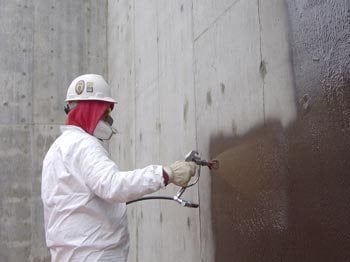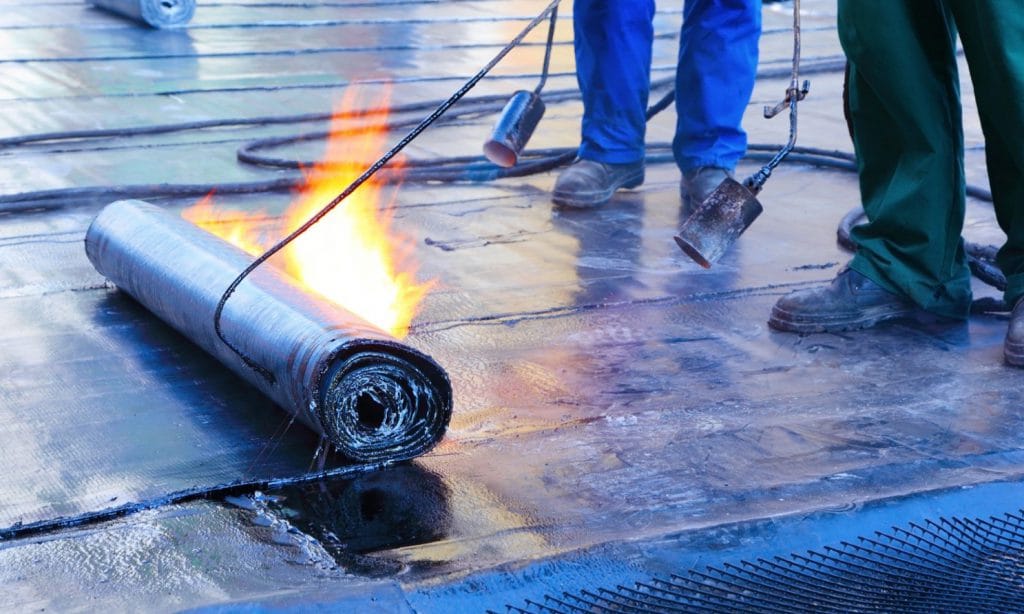How Yard drainage Omaha Can Stop Soil Erosion
Just How Waterproofing Works: A Detailed Take A Look At Methods and Technologies
Waterproofing is important for protecting frameworks from moisture-related damage. It entails different strategies and innovations that create obstacles against water breach. Standard methods, such as compacted clay, exist together with contemporary advancements like liquid-applied membranes. Comprehending the nuances of these strategies is important for reliable application. Nevertheless, the performance of any waterproofing option hinges not only on the strategies used however additionally on ongoing maintenance and inspection. What are the crucial variables that influence long-lasting efficiency?
Comprehending the Essentials of Waterproofing
Waterproofing is a vital procedure that protects structures from water invasion, which can lead to considerable damages with time. This method entails the application of various products and techniques developed to develop a barrier against dampness. The primary goal is to stop water from permeating surface areas, which can create deterioration, mold and mildew development, and architectural instability.Various variables affect the selection of waterproofing approach, consisting of the type of structure, its place, and environmental conditions. Understanding the physics of water movement and the residential properties of various materials is vital in choosing an effective waterproofing solution.Effective waterproofing not only safeguards structures yet additionally boosts their long life and honesty. Commonly, it is incorporated right into the layout phase of construction to guarantee complete defense. As awareness of water-related problems expands, the relevance of understanding waterproofing basics comes to be significantly clear to architects, contractors, and home proprietors alike.
Traditional Waterproofing Methods
Traditional waterproofing methods have actually been made use of for centuries, depending on time-tested strategies and materials to safeguard structures from water damage. One of the oldest approaches involves the use of clay, which, when compressed, creates an all-natural barrier versus dampness. Furthermore, asphalt, a sticky, black material obtained from oil, has been utilized for its waterproof residential or commercial properties, often related to roofs and foundations.Another method entails the application of lime-based plasters, which provide a breathable layer that enables dampness to escape while protecting against water ingress. Thatch roofing, a standard method still seen in some cultures, uses superb waterproofing because of its securely loaded straw layers.Moreover, the usage of stone and brick has projected, as these products are naturally immune to water when correctly set up. Generally, typical waterproofing methods emphasize the significance of choosing proper products and building and construction techniques to boost resilience against water invasion.
Modern Waterproofing Technologies
Improvements in modern-day waterproofing technologies have actually revolutionized the way structures are protected from water damage. Innovative approaches such as liquid-applied membranes and advanced sealers have actually boosted the performance and convenience of waterproofing remedies. These modern technologies permit for smooth application, reducing the risk of leaks and making sure detailed insurance coverage over intricate surfaces.Moreover, the combination of wise technologies, such as moisture sensing units and automated surveillance systems, allows real-time assessment of waterproofing efficiency. This proactive approach promotes timely maintenance and lowers long-lasting repair service costs.Additionally, innovations in spray-applied finishes provide fast application and exceptional bond, adjusting to numerous substratums while offering durable security. Strategies like polymer-modified systems additionally boost versatility and toughness, making them ideal for diverse atmospheres. Generally, modern waterproofing modern technologies not only alleviate water invasion yet likewise add to the longevity and sustainability of structures, noting a substantial shift in the market.
Products Utilized in Waterproofing
The effectiveness of waterproofing options greatly relies on the products used in their application. Various materials are utilized to develop obstacles against water access, each with distinct homes matched for different environments. Frequently utilized products consist of membranes, finishings, and sealants.Liquid-applied membrane layers, often made from polyurethane or acrylic, develop a seamless obstacle that adjusts to intricate surface areas. Sheet membrane layers, generally created from rubber or thermoplastic, offer toughness and are optimal for bigger locations. In addition, cementitious waterproofing products, made up of cementitious substances, provide exceptional bond and flexibility.Sealants made from silicone or polyurethane are essential for joints and seams, guaranteeing complete defense. Furthermore, advanced materials, such as geo-composite membranes, incorporate numerous features, enhancing efficiency. Generally, the choice of waterproofing materials is vital in achieving resilient and efficient water resistance, tailored to details job demands and environmental conditions.
Typical Applications of Waterproofing
Waterproofing plays a crucial function in different sectors, ensuring the longevity and honesty of structures. Common applications consist of domestic solutions that safeguard homes, commercial framework that safeguards services, and industrial setups that require robust security against wetness. Understanding these applications highlights the relevance of waterproofing in preserving both safety and security and capability across various environments.
Residential Waterproofing Solutions
Lots of property owners face challenges with wetness intrusion, making efficient residential waterproofing options vital. Various techniques exist to resolve this issue, consisting of inside and exterior waterproofing systems. Interior services commonly entail the application of sealants and finishes to cellar walls, which assist protect against water seepage. Exterior techniques commonly include the setup of drain systems and water-proof membranes that divert water far from the foundation.Additionally, home owners may think about sump pumps to eliminate water buildup and dehumidifiers to regulate humidity levels. Appropriate grading and the use of rain gutters also play a crucial role in handling water circulation around the home. By carrying out these methods, homeowners can greatly decrease the danger of water damage and mold development, making certain a dry and safe living environment.

Business Facilities Defense
Efficient waterproofing remedies play an essential duty in the security of industrial infrastructure. Water Solutions Omaha. These strategies are important for guarding buildings, auto parking structures, and bridges from water damages, which can compromise architectural stability and lead to expensive fixings. Typical applications include the installation of membranes, finishings, and sealers that develop obstacles against wetness infiltration. Locations such as cellars, roof see this coverings, and outside wall surfaces are commonly focused on to ensure longevity and resilience. Additionally, waterproofing systems can enhance power performance by preventing water-related issues that might bring about mold and mildew development and damage. By applying durable waterproofing procedures, homeowner can safeguard their financial investments and maintain functional performance, inevitably adding to the general sustainability of industrial centers
Industrial Applications Review
While various sectors face one-of-a-kind difficulties, the requirement for reputable waterproofing remedies remains visit this page a continuous in commercial applications. Industries such as production, building and construction, and energy commonly run into settings where moisture direct exposure can jeopardize structural integrity and operational effectiveness. In producing facilities, waterproofing is vital for securing equipment and products from water damages. In building and construction, it safeguards foundations and basements against groundwater infiltration. The energy industry counts on waterproofing for the defense of equipment in hydroelectric plants and offshore frameworks. In addition, food processing sectors utilize waterproofing to ensure hygiene and conformity with safety requirements. Overall, reliable waterproofing solutions are important for enhancing durability, safety, and performance across different industrial setups.
Upkeep and Durability of Waterproofing Solutions
Waterproofing options are developed to supply long-lasting defense against moisture breach, regular upkeep is vital to guarantee their performance and longevity. Regular evaluations play a significant duty in identifying possible concerns such as splits, peeling, or indicators of water damage. Attending to these troubles without delay can protect against additional degeneration and costly repairs.Additionally, cleaning up the surface of waterproofed areas assists get rid of dust and particles that could jeopardize the honesty of the waterproofing barrier. It's also a good idea to reapply safety coverings or sealants as suggested by manufacturers to preserve suitable efficiency. Ecological factors, such as UV exposure and extreme climate condition, can influence the like this lifespan of waterproofing materials, making regular evaluation crucial
Frequently Asked Questions
Can Waterproofing Be Applied in Cold Weather Condition?
The inquiry of using waterproofing in cool weather raises concerns about adhesion and healing. Several products may not carry out at their finest in low temperature levels, requiring cautious choice and consideration of particular guidelines for efficient application.
Exactly How Lengthy Does Waterproofing Generally Last?
The duration of waterproofing performance differs based on materials and environmental factors. Usually, it can last from 5 to 10 years, however routine maintenance and evaluations are important to guarantee peak performance and longevity.
Is DIY Waterproofing Effective and Safe?
The effectiveness and security of do it yourself waterproofing rely on numerous variables, consisting of material quality and application method. While some individuals attain satisfying results, others might come across concerns that compromise lasting security and structural honesty.
What Are the Indications of Failing Waterproofing?
Indications of falling short waterproofing consist of visible water spots, peeling paint, mold and mildew growth, mildewy odors, and wetness in walls or ceilings - Yard drainage Omaha. These indicators recommend endangered barriers, demanding prompt examination and prospective removal to prevent more damage
Exactly how Do I Pick the Right Waterproofing Specialist?
